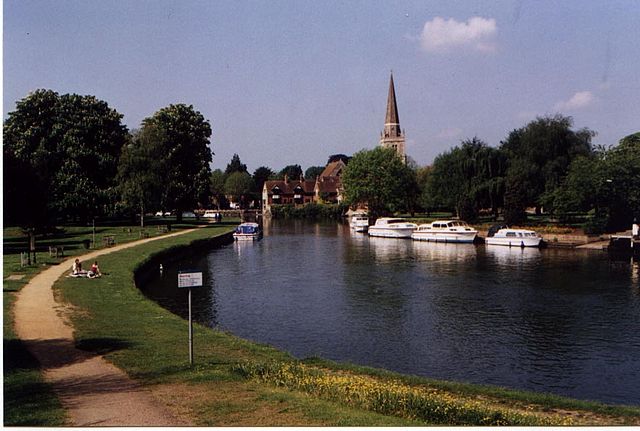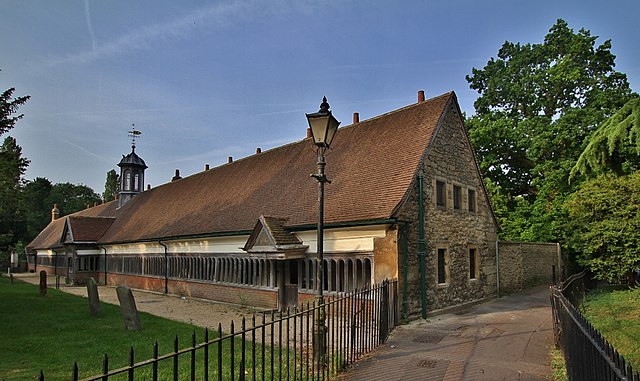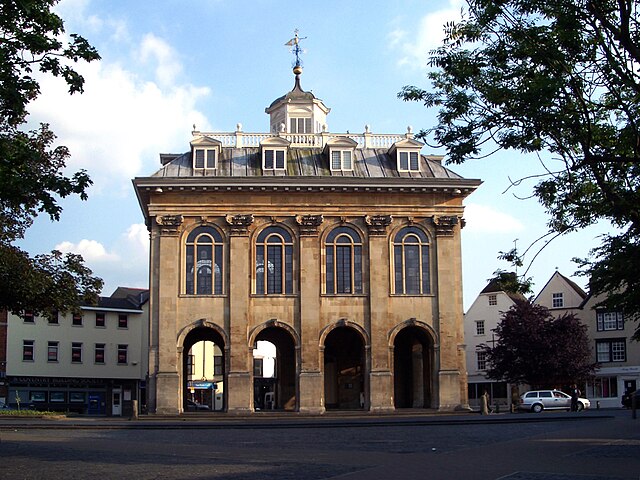Sutton Courtenay is a village and civil parish on the River Thames 2 miles (3 km) south of Abingdon-on-Thames and 3 miles (5 km) northwest of Didcot. Historically part of Berkshire, it has been administered as part of Oxfordshire since the 1974 boundary changes. The 2011 census recorded the parish's population as 2,421. Sutton Courtenay is home to some important structures, such as The Abbey, the Manor House, All Saints' Church, a twelfth-century Norman hall, the Sutton Bridge, and Didcot power station.
All Saints' parish church
The Norman Hall in Church Street
The Abbey, Sutton Courtenay, a medieval courtyard house and former rectory
H. H. Asquith's grave in All Saints' parish churchyard
Abingdon-on-Thames, commonly known as Abingdon, is a historic market town and civil parish on the River Thames in the Vale of the White Horse district of Oxfordshire, England. The historic county town of Berkshire, the area was occupied from the early to middle Iron Age and the remains of a late Iron Age and Roman defensive enclosure lies below the town centre. Abingdon Abbey was founded around 676, giving its name to the emerging town. In the 13th and 14th centuries, Abingdon was an agricultural centre with an extensive trade in wool, alongside weaving and the manufacture of clothing. Charters for the holding of markets and fairs were granted by various monarchs, from Edward I to George II.
The River Thames at Abingdon looking towards St. Helen's parish church
Long Alley Almshouses next to St Helen's parish church
St Helen's parish church from across the Thames
County Hall, completed in 1680








